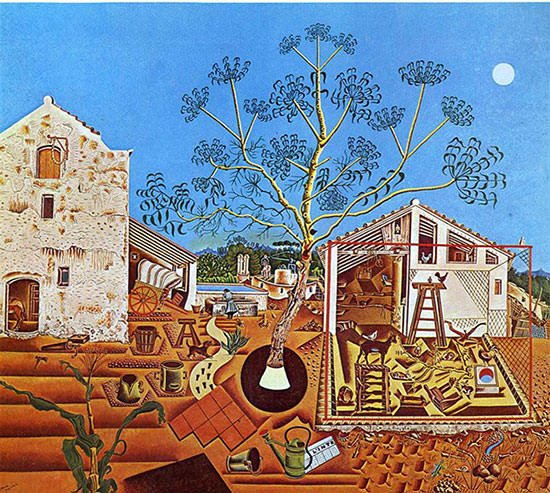He went to the Netherlands in 1928 and started a series of paintings inspired by Dutch artists, and he created his first papiers collés and collages. In 1960, Miró’s artistic style underwent a dramatic change when he started using the color black to outline shapes and fill them in. Beginning in 1966, Miró worked mostly in sculptures, which were based on small objects that he joined in unique ways. Stones, branches and manufactured items were joined in a Surrealist style but also in a way that revealed his desire for the simplicity of nature. Joan Miró died December 25, 1983 in Palma de Mallorca, Spain. His final work was the large sculpture “Woman and Bird,” which was displayed in the gardens on the former site of the Barcelona abattoir.
Joan Miro’s most famous painting, “The Farm” shows the family’s country house in Mont-roig del Camp, Catalonia. Miro later said of the artwork, “I wanted to put everything I loved about the country in the canvas, from a huge tree to a tiny little snail.” Miro regarded “The Farm” as the pinnacle of his artistic career. He described it as “the summary of one period of my work, but also the point of departure for what was to follow.” The painting is regarded as the highest point of Miro’s realistic representations, before he shifted to surrealism. Ernest Hemingway bought the painting and compared its artistic accomplishment to James Joyce’s Ulysses. He wrote in 1934, “I won’t change The Farm for any painting in the world.”
Nimbus Frames allow you to choose digital art from thousands of artists and art collections around the world, as well as upload your own digital art and photographs. The Nimbus Frame is a large wall-mounted WiFi digital picture frame.

